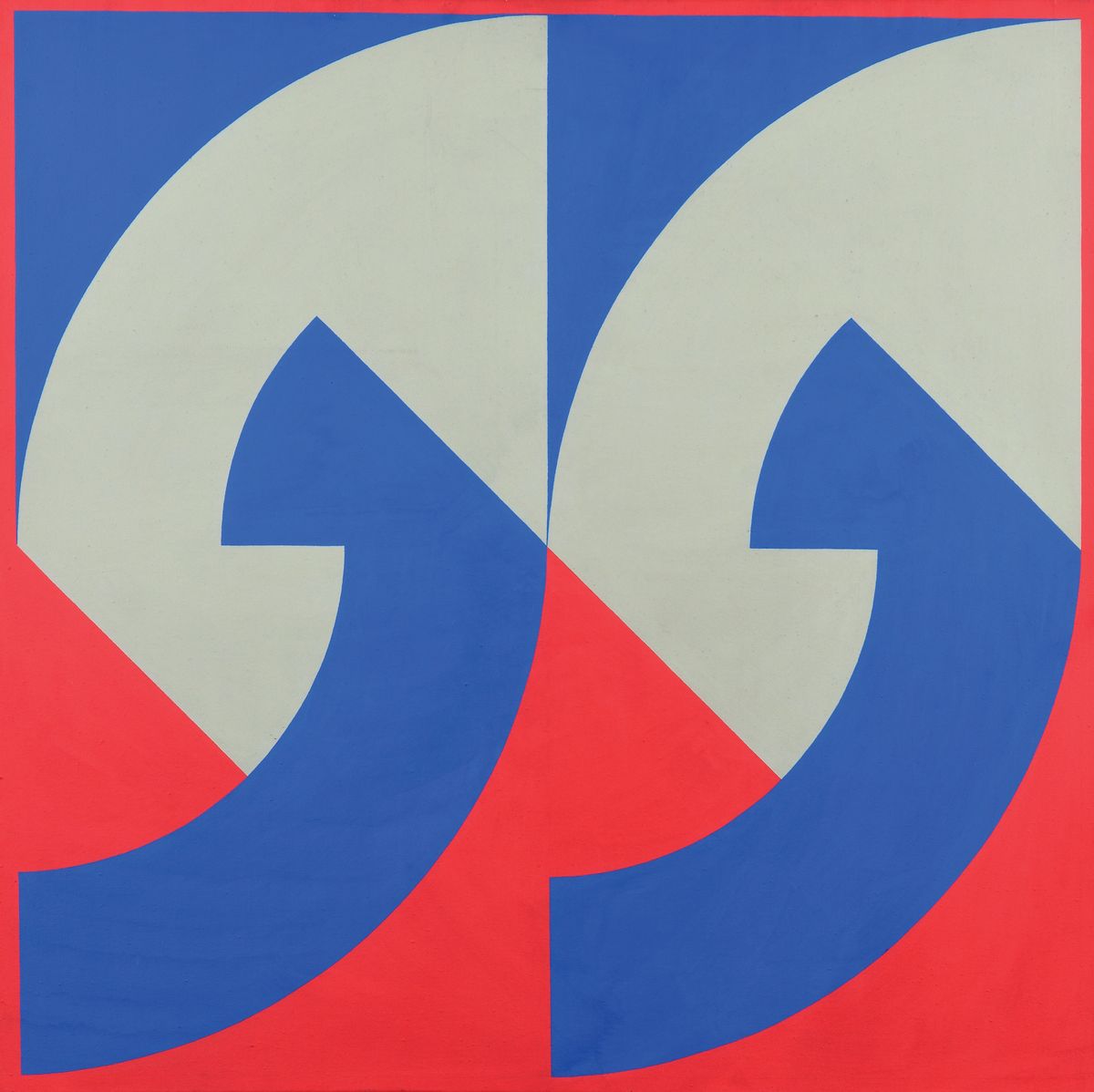Just as the rifts of the Cold War have reared their head again in politics, so, too, has the era snapped back into view in the cultural landscape, as interest in art produced in eastern Europe between the 1960s and 1989 percolates in museums and galleries. Art from Iron Curtain-era Hungary in particular has gained a foothold, as witnessed this month by a presentation curated by József Mélyi at the Vienna Contemporary fair.
The coalescence around Hungary may be thanks to a certain accessibility to Western eyes. Compared to their Eastern Bloc neighbours, the country’s artists operated in a tantalising margin between East and West. Aware of developments like Pop, Minimalism and Fluxus, but cut off from participating in them directly and facing state censorship, Hungarian artists devised creative strategies of resistance.
Abstraction was one such mode, practised by Imre Bak and István Nádler; others, like Miklós Erdély and Tamás Szentjóby, combined dissent and performance. A group dubbed the Pécs Workshop produced screen-printed posters with subtly encoded messages. But there was no local market to speak of, and the closed economic system meant much Hungarian art never left the country.
In 2013, a trio of Budapest galleries—Kisterem, Vintage and ACB Galéria—organised a group show, Bookmarks, to present an overview of these artists and their colleagues. “We realised that we are not able to position our contemporary art without positioning the roots of it,” Orsolya Hegedüs, an artistic director of ACB, says. The galleries also embarked on a parallel programme of scholarship to bolster the body of literature on artists of the so-called “neo-avant-garde”.
By 2015, there were signs that Hungary was penetrating the international consciousness, with London’s Austin Desmond Fine Art unveiling a show of neo-avant-gardists, while Bookmarkswas reprised at Art Cologne. Last year, plaster reliefs by György Jovánovics were featured at London’s Mayor Gallery, and White Cube devoted its summer show to the conceptual artist Dóra Maurer. This past May, at Elizabeth Dee gallery in New York, the critic András Szántó convened an ambitious group show, With the Eyes of Others: Hungarian Artists of the Sixties and Seventies—the first large-scale exhibition on the topic in the US. The poet and performance artist Katalin Ladik, shown by ACB Galeria at Frieze New York, appeared in Documenta over the summer.
Christina Steinbrecher-Pfandt, the director of Vienna Contemporary, says she has been impressed by the Hungarian galleries’ efforts to familiarise fairgoers with their artists in past editions. “I see how their hard work is paying off, so this seemed to be a great moment to put the fair’s focus on it this year.”
Prices remain well below those of their international peers; ACB’s presentation at Vienna Contemporary will top out at around €70,000 for major pieces. But the current attraction may go beyond the value proposition. As Szántó writes in a catalogue essay accompanying
the Elizabeth Dee show, “The art world is nostalgic for the days when artists stood on the margins, when they worked against something and risked a lot. One thing that you can certainly say about the Hungarian neo-avant-garde artists is that theirs was art produced in spite of the market, not because of it.”
The neo-avant-garde continues to exert influence in the region. As Budapest-based dealer Anamaria Molnár, of Ani Molnár Gallery, notes, “some of the emblematic artists from this period, like Maurer, are still active and able to transmit their way of thinking” to younger practitioners. In her multi-generational booth, she is showing a major painting by Ottó Vincze (b. 1964) from his rediscovered 1980s period in conversation with works by István Haász (b. 1946), Sári Ember (b. 1985) and Péter Somody (b. 1963). Among Hungary’s contemporary artists, “it is hard to identify any common notion or aesthetics”, she says. “Most are reflecting on global issues, using universal language.”
While Molnár, who has shown at Vienna Contemporary since 2011, welcomes the curatorial attention the fair has helped bring to Central and Eastern European art, she adds, “It is equally important that artists and galleries from the region are no longer treated as a curiosity, but rather as real Europeans, as integral parts of the international art ecosystem.”
• Vienna Contemporary, Marx Halle, Vienna, 20-24 September


